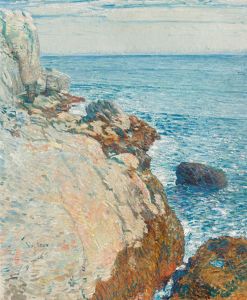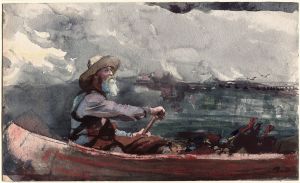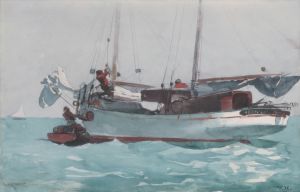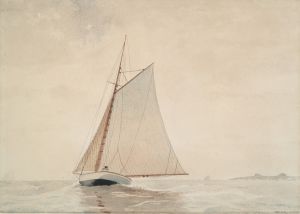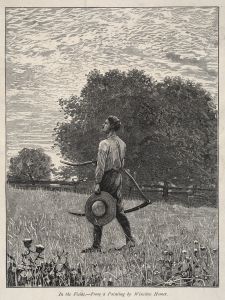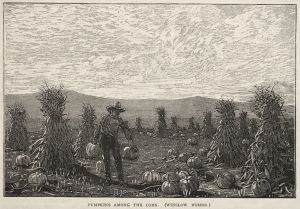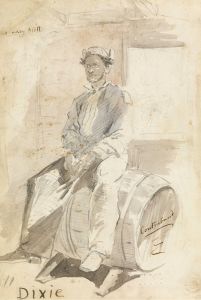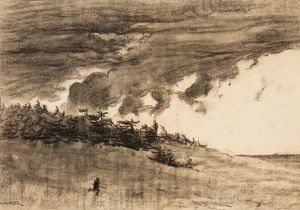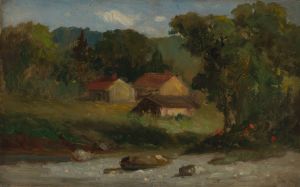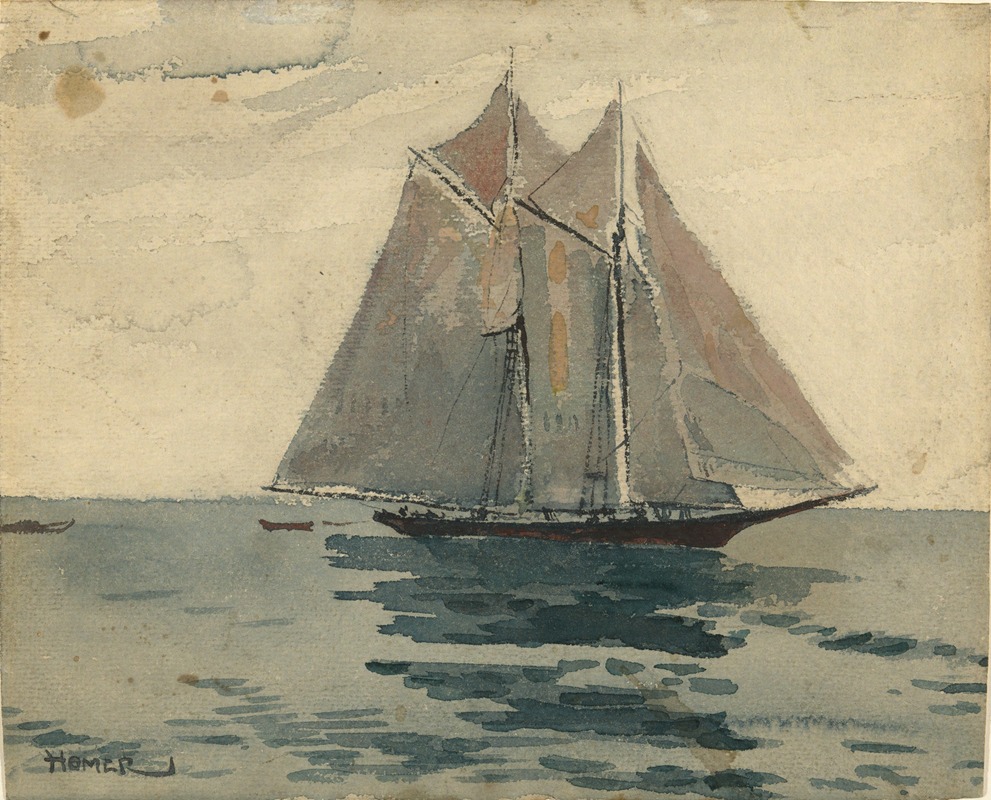
Gloucester Schooner
A hand-painted replica of Winslow Homer’s masterpiece Gloucester Schooner, meticulously crafted by professional artists to capture the true essence of the original. Each piece is created with museum-quality canvas and rare mineral pigments, carefully painted by experienced artists with delicate brushstrokes and rich, layered colors to perfectly recreate the texture of the original artwork. Unlike machine-printed reproductions, this hand-painted version brings the painting to life, infused with the artist’s emotions and skill in every stroke. Whether for personal collection or home decoration, it instantly elevates the artistic atmosphere of any space.
Winslow Homer, an American landscape painter and printmaker, is renowned for his marine subjects. One of his notable works is "Gloucester Schooner," which captures the essence of maritime life and the sea's dynamic nature. Homer was born in 1836 in Boston, Massachusetts, and he began his career as a commercial illustrator. He later transitioned to painting, where he gained recognition for his realistic and evocative depictions of the American landscape and seascape.
"Gloucester Schooner" is a testament to Homer's fascination with the sea and his ability to convey its power and beauty. The painting depicts a schooner, a type of sailing vessel that was commonly used for fishing and trade in the 19th century, particularly in the New England region. Gloucester, Massachusetts, was one of the most important fishing ports in the United States during this time, and it served as a significant source of inspiration for Homer.
Homer's work is characterized by its attention to detail and its ability to capture the mood and atmosphere of the scene. In "Gloucester Schooner," he employs a realistic style that highlights the schooner's structure and the surrounding sea. The painting reflects Homer's keen observation skills and his deep understanding of the maritime environment. His use of color and light effectively conveys the changing conditions of the sea and sky, adding a dynamic quality to the composition.
The painting is also notable for its composition, which draws the viewer's eye to the schooner as it navigates the open water. Homer's ability to depict movement and the interaction between the vessel and the sea is evident in the way he portrays the waves and the schooner's sails. This attention to movement and detail is a hallmark of Homer's marine paintings and contributes to the overall impact of the work.
Homer's interest in maritime subjects was partly influenced by his visits to coastal communities and his firsthand experiences with the sea. He spent time in Gloucester and other coastal towns, where he observed the daily lives of fishermen and sailors. These experiences informed his work and allowed him to create paintings that resonate with authenticity and emotion.
"Gloucester Schooner" is an example of Homer's ability to blend realism with artistic expression, capturing the essence of the maritime world. His work continues to be celebrated for its technical skill and its ability to evoke the spirit of the sea. Homer's paintings, including "Gloucester Schooner," are held in high regard and are featured in various art museums and collections, where they continue to inspire and captivate audiences.
Winslow Homer passed away in 1910, but his legacy as one of America's foremost painters endures. His contributions to the art world, particularly his marine paintings, remain influential and are studied for their artistic merit and historical significance. "Gloucester Schooner" stands as a testament to Homer's mastery of the marine genre and his enduring impact on American art.





